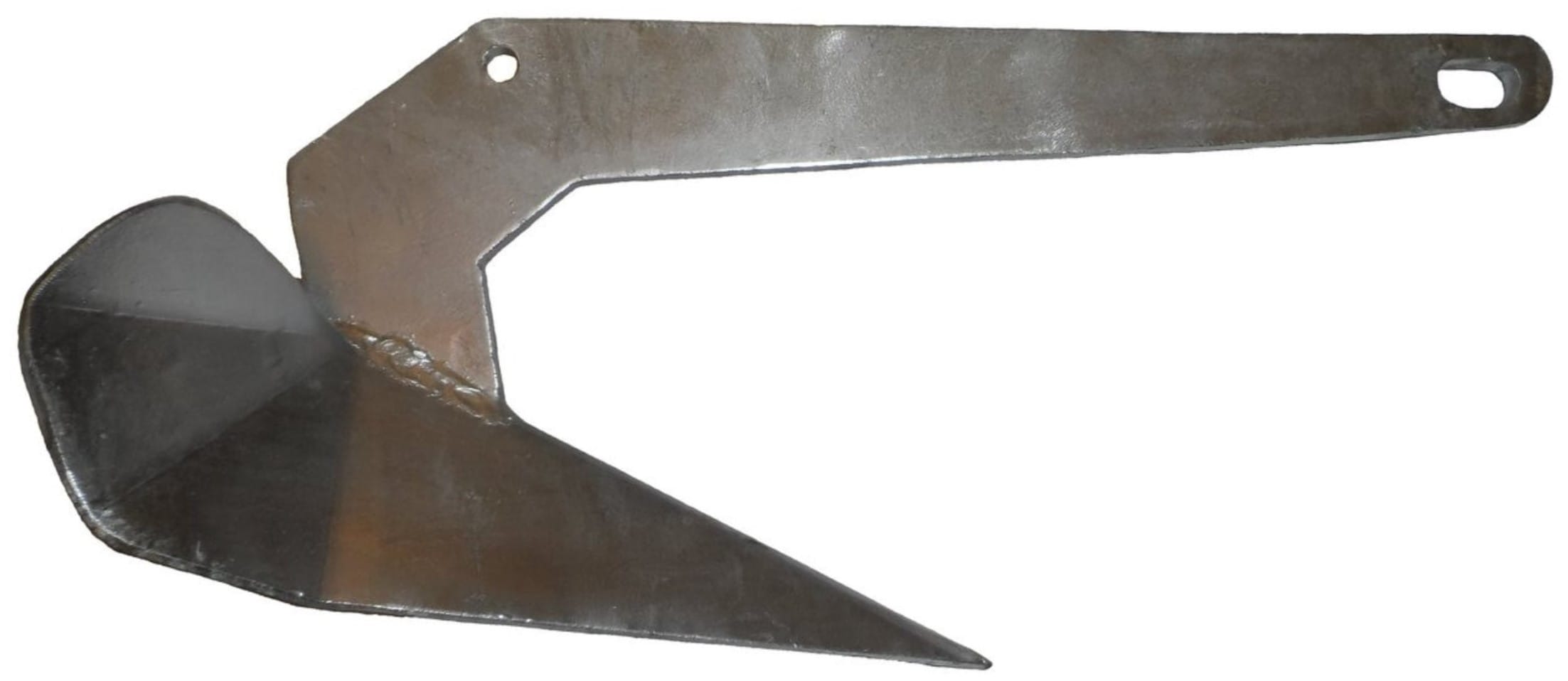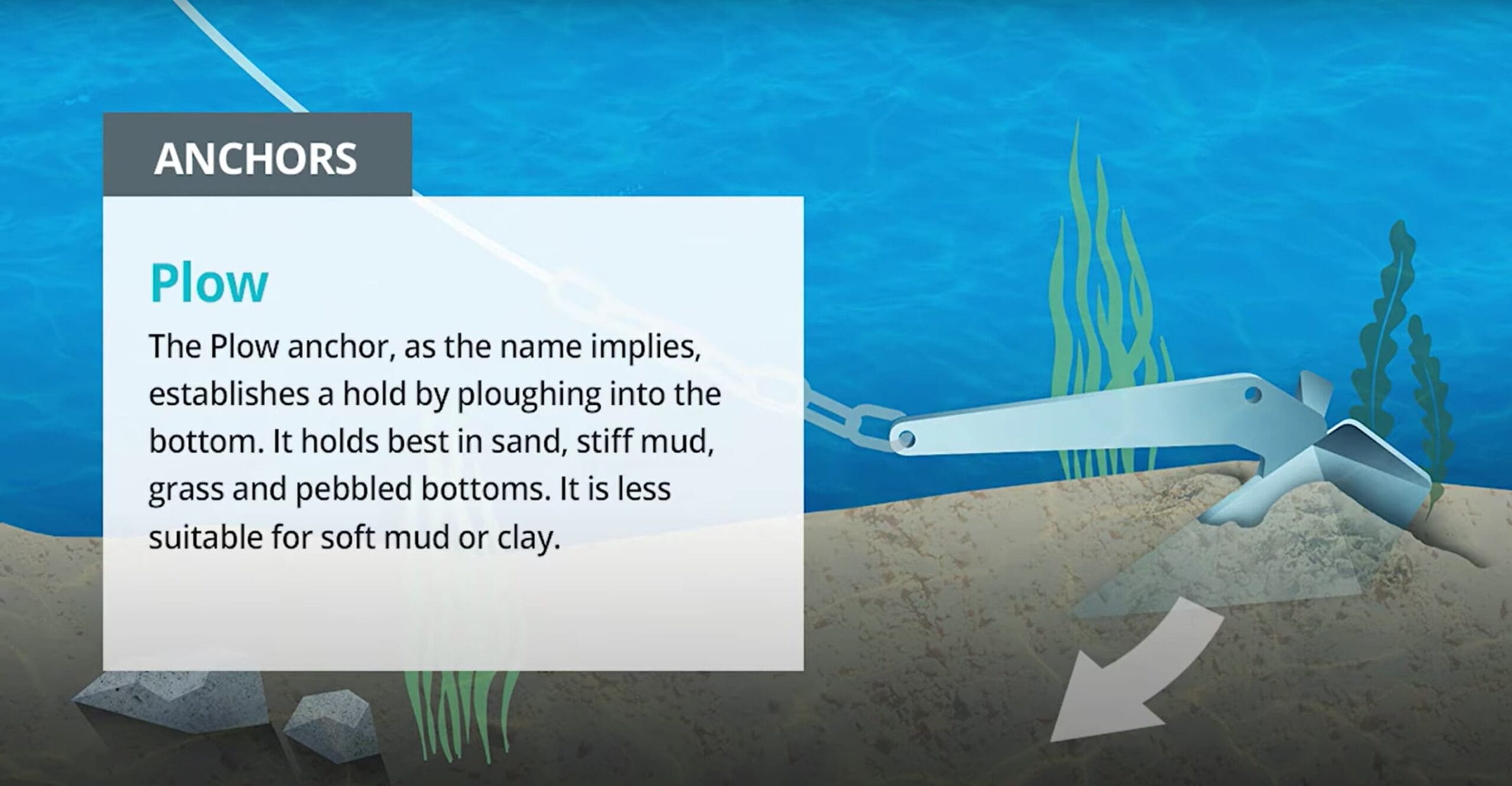Plow Anchor
A plow anchor is a versatile and reliable anchoring solution favored by many boaters for its excellent holding power across a variety of seabed conditions. Whether you’re sailing in sand, mud, gravel, or weed-covered bottoms, a plow anchor can provide the security you need. This comprehensive guide will explain what a plow anchor is, how it works, how to select the right one, best practices for its use, and details about different plow anchor variations. We’ll include valuable facts, data, and a plow anchor size chart to help you make an informed decision.

What Is a Plow Anchor?
A plow anchor, also known as a plow style anchor or anchor plow, is designed with a single fluke that resembles a farmer’s plow blade. This unique shape allows it to penetrate deeply into the seabed, providing strong holding power. The plow anchor is renowned for its ability to reset itself if the wind or current changes direction, making it an excellent choice for overnight anchoring or in areas with shifting conditions.
The design typically includes a weighted or hinged shank, which helps the anchor to orient correctly upon hitting the seabed. As the boat pulls on the anchor rode (the line connecting the anchor to the boat), the plow anchor digs deeper into the seabed, increasing its holding strength. Its versatility across different seabed types makes it a popular choice among sailors and motorboat owners alike.

How Does a Plow Anchor Work?
The plow anchor operates by utilizing its plow-shaped fluke to cut through and embed itself into the seabed. When deployed, the anchor lands on the seabed, and as tension is applied to the anchor rode, the fluke tips downward and begins to dig in. The more the boat pulls back, the deeper the anchor buries itself, enhancing its holding capacity.
One of the key advantages of a plow anchor is its ability to reset if the boat changes direction due to wind or tidal shifts. If the anchor is pulled from a different angle, it can pivot and re-dig into the seabed without losing significant holding power. This self-righting capability is crucial for maintaining anchorage in variable conditions.
How to Select a Plow Anchor
Choosing the right plow anchor for your vessel involves several important considerations, including your boat’s size, typical anchoring conditions, and personal preferences regarding materials and design variations.
Boat Size and Weight
Understanding your boat’s specifications is the first step:
- Length Overall (LOA): Measure the total length of your boat from bow to stern.
- Displacement: Know your boat’s loaded weight, including fuel, gear, and passengers.
These factors influence the size and weight of the anchor you need. A larger, heavier boat requires a heavier anchor to ensure adequate holding power.
Anchoring Conditions
Assess the typical conditions where you anchor:
- Seabed Type: Plow anchors perform well in sand, mud, clay, gravel, and even weed-covered bottoms.
- Weather Conditions: Consider the strength of winds, currents, and tides in your usual anchoring locations.
- Water Depth: Deeper waters may necessitate more anchor rode and could impact the size of the anchor you choose.
Material and Construction
Plow anchors are commonly made from:
- Galvanized Steel: Durable and cost-effective, though it may corrode over time if not properly maintained.
- Stainless Steel: Offers superior corrosion resistance and aesthetic appeal but comes at a higher cost.
Plow Anchor Size Chart
Refer to this general plow anchor size chart to help determine the appropriate anchor weight for your boat:
| Boat Length | Anchor Weight (Galvanized Steel) |
|---|---|
| Up to 25 ft (7.6 m) | 14 lb (6 kg) |
| 26 – 30 ft (7.9 – 9.1 m) | 21 lb (9.5 kg) |
| 31 – 35 ft (9.4 – 10.7 m) | 35 lb (16 kg) |
| 36 – 40 ft (11 – 12.2 m) | 45 lb (20 kg) |
| 41 – 50 ft (12.5 – 15.2 m) | 60 lb (27 kg) |
| 51 – 60 ft (15.5 – 18.3 m) | 80 lb (36 kg) |
Note: These are general guidelines. Always consult the manufacturer’s specifications for accurate sizing based on your specific vessel and conditions.
Best Practices for Using a Plow Anchor
Proper usage of a plow anchor ensures optimal performance and safety.
Deployment
Before deploying the anchor, ensure that the anchor, chain, and rode are in good condition and securely connected. Approach your intended anchoring spot into the wind or current, which allows for better control as you set the anchor.
Lower the anchor slowly to the seabed. Avoid throwing it, as this can cause tangles or improper orientation upon landing. Once the anchor reaches the bottom, let out the recommended amount of rode. A common guideline is a scope ratio of 5:1 to 7:1 (five to seven feet of rode for every foot of water depth plus the distance from the waterline to where the rode is secured).
After letting out sufficient rode, gently reverse your boat to help the plow anchor dig into the seabed. Monitor your surroundings to ensure the anchor is holding. You can check for anchor drag by observing fixed landmarks, using electronic navigation equipment, or employing an anchor alarm on your GPS device.
Refer to the American Sailing Association’s Anchoring Techniques for detailed tips on the proper deployment process.
Retrieval
When retrieving the anchor, slowly move the boat towards the anchor location to reduce tension on the rode. Use a windlass or manual effort to pull the anchor rode vertically. Pulling straight up helps the anchor break free from the seabed. Once retrieved, clean off any debris from the anchor before stowing it securely to prevent movement while underway.
Safety Tips
- Use Adequate Scope: The scope ratio significantly affects holding power. In normal conditions, a 5:1 ratio is acceptable. In adverse weather, increase the scope to 7:1 or even 10:1.
- Regular Inspection: Frequently check your anchor, chain, and rode for signs of wear, corrosion, or damage. Replace any compromised components promptly.
- Monitor Conditions: Stay aware of changing weather, tides, and currents that may affect your anchorage.
- Communication: Inform your crew of anchoring procedures and ensure everyone knows their role during deployment and retrieval.
Plow Anchor Variations and Details
Understanding the different plow anchor variations helps in selecting the most suitable one for your needs.
CQR Plow Anchor
The CQR anchor is distinguished by its hinged shank, which allows it to adjust to changes in wind or current direction without losing its hold. This flexibility makes it highly reliable in variable conditions. The CQR is made from high-strength steel and is known for its durability and long service life. However, it can be heavier and more expensive than other types.
Delta Plow Anchor
The Delta anchor features a fixed shank and a plow-shaped fluke designed for quick setting. Its simple, one-piece construction provides strength and dependability. Made from galvanized or stainless steel, the Delta anchor offers high holding power and is effective across a range of seabed types. Its ability to set rapidly makes it advantageous in situations where anchoring needs to be done efficiently.
Claw Anchor (Bruce Anchor)
While not a traditional plow anchor, the claw anchor shares similar qualities. Its design includes a three-pronged claw that allows for 360-degree anchoring capability. The claw anchor sets easily without precise alignment and holds well in most seabeds, including sand, mud, and rock. It is forgiving of changes in wind and current direction, making it a versatile option.
Valuable Facts and Data
Understanding the performance characteristics of plow anchors can inform your anchoring strategy.
Holding Power
Plow anchors are known for their high holding power relative to their weight. Their ability to bury deeply into the seabed and maintain a firm hold even as conditions change makes them a dependable choice. The self-righting feature ensures that if the anchor is pulled out, it can reset itself efficiently.
Scope Recommendations
The scope ratio—the length of anchor rode relative to the depth of the water plus freeboard—is crucial for effective anchoring.
- Normal Conditions: A scope ratio of 5:1 is generally sufficient.
- Adverse Conditions: In strong winds, currents, or tidal variations, increase the scope to 7:1 or even 10:1.
Calculating Scope
Use the following formula to calculate the required length of the anchor rode:
Length of Rode=(Water Depth+Freeboard)×Scope Ratio
- Water Depth: The distance from the seabed to the water’s surface.
- Freeboard: The vertical distance from the waterline to the point where the anchor rode is secured on the boat (typically the bow roller or cleat).
- Scope Ratio: Desired ratio based on conditions (e.g., 7:1).
Example Calculation:
- Water Depth: 20 ft
- Freeboard: 5 ft
- Desired Scope Ratio: 7:1
Length of Rode=(20 ft+5 ft)×7=25 ft×7=175 ft
Therefore, you would need to let out 175 feet of anchor rode to achieve a 7:1 scope.
Selecting the right plow anchor is essential for your vessel’s safety and security. By understanding how plow anchors work and considering factors such as your boat’s size, typical anchoring conditions, and the different types of plow anchors available, you can make an informed choice that suits your needs.
Following best practices in deployment and retrieval, maintaining your anchoring equipment, and staying aware of environmental conditions will enhance your anchoring success. If you’re uncertain, always consult manufacturer guidelines and seek advice from reputable sources.
FAQ section
What is a plow anchor good for?
A plow anchor is versatile and performs well across various seabeds, including sand, mud, gravel, and clay. It is known for its strong holding power and ability to reset itself if the boat’s direction changes due to wind or tide, making it ideal for overnight anchoring and in areas with shifting conditions.
What is a Bruce anchor?
Are plow anchors good for sand?
What size plow anchor do I need?
The size of the plow anchor you need depends on your boat’s length and weight. A general rule is:
- Up to 25 ft (7.6 m): 14 lb (6 kg)
- 26 – 30 ft (7.9 – 9.1 m): 21 lb (9.5 kg)
- 31 – 35 ft (9.4 – 10.7 m): 35 lb (16 kg)
- 36 – 40 ft (11 – 12.2 m): 45 lb (20 kg)